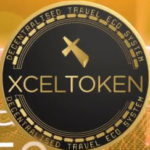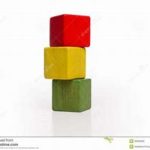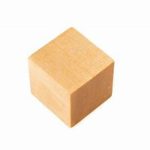
These Blockchain Basics will help you to understand this new technology that is revolutionizing the world. Like it or not, the blockchain is here to stay.
BLOCKCHAIN BASICS – LET’S BEGIN
There was a time we all lived without the internet. That must be hard to comprehend for some of our younger users that are enjoying the internet today.
In previous times, we would come home; make ourselves comfortable, and perhaps read the newspaper or magazine. Perhaps we even watched the evening news on our TV. Whatever we used to get information, we trusted that source. We were content with it and enjoyed it. But interacting with it was impossible. We could never imagine in our wildest dreams that maybe some day we could write an article of our own and even publish it. We thought only journalists did that, right? It was something that a publisher would do, but not us!
But once the internet became a reality, anyone had the capability to spread any type of information to anyone else. Information is now transmitted instantly from one place to anywhere on the earth. This is what we call the decentralization of information. Obviously, not all this information can be trusted. So it is very important to understand these blockchain basics. After all, we are into the future, now!
Blockchain Basics: What the internet does to information; Cryptocurrencies do to payments.
- In other words, if today you no longer need a newspaper or TV to have information, tomorrow you will no longer need a bank to make your payments.
Definition:
- Cryptocurrency – A digital currency or decentralized system of exchange that uses advanced cryptography for security.
- XcelToken – A Blockchain Utility Token. A cryptocurrency creation of XcelTrip.
Let’s Review Some of the Current Financial System and How it Works
When you buy a book online, you might pay PayPal immediately. Your purchase is a request to PayPal to pay the seller of the book for you. Then PayPal charges your VISA card, which charges your bank account. That payment goes through several intermediaries before it gets to the bank account of the seller. For example, in this case, let’s say there are five intermediaries. Each one of them takes a transaction fee because they own half of a part of the pie. And you are the one paying these fees. Even the seller is paying a small fee. We are all paying for these intermediaries.
 But in the real world, if you make a cash transaction from one person to another, you don’t need an intermediary. You just give some money and you get some goods, and the transaction is settled. There is no intermediary to demand a fee. There is no fee taken by anyone. What if the internet could have a system like that? Wouldn’t a system like that be awesome? You wouldn’t need any intermediaries that always have to check the money and then transfer it to someone else. That is what cryptocurrencies make possible.
But in the real world, if you make a cash transaction from one person to another, you don’t need an intermediary. You just give some money and you get some goods, and the transaction is settled. There is no intermediary to demand a fee. There is no fee taken by anyone. What if the internet could have a system like that? Wouldn’t a system like that be awesome? You wouldn’t need any intermediaries that always have to check the money and then transfer it to someone else. That is what cryptocurrencies make possible. 
Cryptocurrencies like:
- Bitcoins (and yes, anyone can mine for free Bitcoins)
- XcelTrip’s Xcel Tokens (will revolutionize and decentralize the travel industry)
- And many others
Bitcoin is only one application.
XcelTrip and its Xcel Tokens, again, are decentralizing the Travel Industry.
Cryptocurrencies are based on the technology that is BLOCKCHAIN.
For those who don’t know Blockchain, look at it this way. Blockchain is the iPhone and Bitcoin and Xcel Tokens are different applications that sit on the iPhone.
So, to understand the full potential of blockchain, you must first understand the blockchain basics and its doctrine, or the rules that cannot be broken.
Imagine the “block” above as a block of the blockchain. Every block contains information (travel bookings, entertainment, news, blogs, research, etc.). Each block is created on the network and a couple of minutes later, someone in the network (doesn’t matter who right now) can create a second block. And the second block says, “Hey, I’m block number two and I am going to link myself on top of block number one.” And then a couple minutes later, a third block comes along and says, “Hey, I’m block number three, and I am going to link myself to block number two.”
So, we have a sequential order of blocks. And each of these blocks refer to the previous block. So, we have a “chain” of blocks. And there you have it: Blockchain! It is just that simple.
Now, we also mentioned that this blockchain contains information. In this way, you can look at the blockchain as a “database”.
Databases Today are Very Centralized
You usually have one central database that keeps track of all the information. Everybody else connects to that central source of information. Naturally, we put a lot of security around it because it is a central source. We invest a lot of money into making firewalls and other security checks to make sure that information is protected.
What happens if this central database gets corrupted, or is no longer valid? In the best cases, you have a backup. But if someone corrupts the database, the information there is just wrong.
We mentioned that Blockchain or Bitcoin or Xcel Tokens were decentralized so how does that work in the Blockchain world? Well, you have the blockchain described above. But you do not have only one Blockchain. You have multiple Blockchains that sit on every node of the network and those blockchains are exact duplicates.
Now, what is the “node” of the network? It’s you, it’s me, it’s everyone that has a computer. Everyone that has a computer can be part of the network. You and I have a personal blockchain network on our computers. It’s an exact duplicate of all the other blockchains in the network.
So, we have a chain of blocks; it’s decentralized, with duplicates all over the world: tens, hundreds, thousands of duplicates all over the world. If one of them falls away, there is no problem. Everybody else can create a duplicate again to replace it.
Here is the Magic of Blockchain
For the purpose of our Blockchain Basics article, suppose you wrote an amazing article and you are ready to publish it in Scientific Review but first you want to have a peer review from one of your colleagues. Before sending the article to your colleague, you decide to store it in block number two (example above). Your colleague reviews the article and says it is so great that it could win the Nobel Prize. But suppose instead, your colleague wants to put his name on it and send it to a publisher and win the Nobel Prize. However, to steal your article, he would have to delete the proof (in his block number 2) that you wrote this article. He’ll have to get rid of his block number 2 entirely.
This blockchain from your colleague is now different from all the other blockchains. But without block number 2, the blockchain cannot work. The blockchain will not be valid without block number 2 in the blockchain world. Everyone in the network will see that your colleague’s blockchain is corrupted and is no longer valid. The corrupted blockchain will be rejected by the network. So, the only way this cheating colleague can stay in the network is to keep the proof (block number 2) that you wrote the article and not him.
So, this is very important and useful, when compared to today’s databases.
Here is another simple example of a database today. There are offices that keep track of who owns a parcel of land. But when someone decides that he is going to allocate some parcel of land to himself, instead of to the actual owner, it’s easy for him to do so. This has actually happened in real life. In the blockchain world, this is not possible, because you cannot take information away from the blockchain.
So, we have a chain of blocks that is decentralized, and you cannot take a block away. This is the magic of blockchain!
I hope you enjoyed this article on Blockchain Basics.
I wish to recognize and thank Mr. Jean-Luc Verheist for his YouTube Video that inspired this lesson. Much of this content is from that video. You can view his video below:
Blockchain for Dummies – Part 1 – Introduction to the very basics




